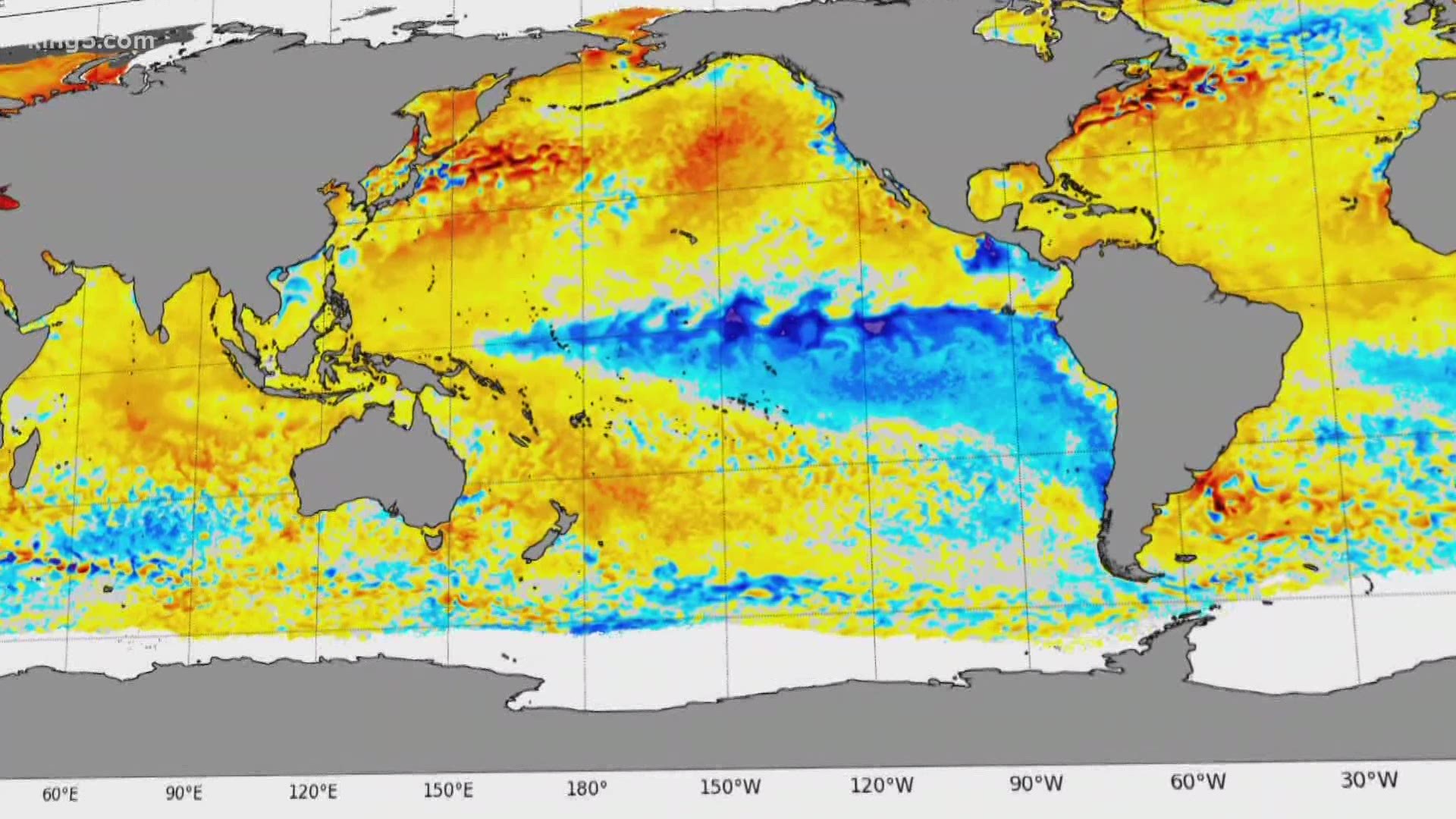SEATTLE — The chances for a La Niña, known to bring colder and wetter winters to the Pacific Northwest, is basically a "sure bet," according to government meteorologists.
That means it has about a 95% chance of driving our weather this winter starting in January, and has a better chance of lingering well into the spring.
The new forecast came out Thursday from the National Climate Prediction Center, under the National Oceanic and Atmospheric Administration (NOAA).
La Niña is the opposite of El Niño, which more people are familiar with.
La Niña occurs when cooler than normal water along the equator in the Pacific Ocean dominates the eastern half of the ocean and collides with the coast of Central and South America. An El Niño is when that water is warmer than normal.
The difference can be as little as a few degrees, but it can upend the world’s weather, not just along the Pacific Coast.
Meteorologists said they have watched the La Niña strengthen through the month of October, although it won't really start affecting the weather in the Pacific Northwest until January.
Nick Bond works in the University of Washington's Department of Atmospheric Sciences and is affiliated with NOAA's Pacific Marine Environmental Laboratory. He is an expert in how oceans interact with the atmosphere.
"You can think of the tropics as kind of the heat engine for the global climate system," said Bond, who serves as Washington state's climatologist.
"And when you disrupt that heat engine," Bond said it also alters the clusters of thunderstorms in that part of the world, "and that has an impact on global weather patterns."
For the Pacific Northwest, temperatures promise to be cooler with more precipitation. Bond said that may be just a few degrees, but does promise a healthier snow pack, good skiing, and more irrigation water for farmers come summer time. It also means that extreme wind storms will be less likely through Puget Sound, and he hopes less of a chance of lowland snow near sea level.
It also means winter will feel like it’s hanging around too long.
The Climate Prediction Center said there’s about a 65% chance of it influencing the climate in the months of March, April and May.

